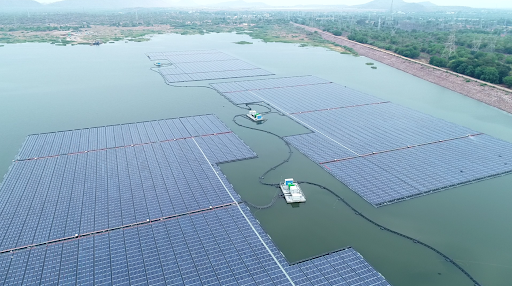
Introduction
As India continues its ambitious transition to renewable energy, one of the key challenges in harnessing solar and wind power lies in their intermittent nature. Unlike conventional power plants that can generate electricity consistently, renewable energy sources such as solar and wind are dependent on environmental factors like sunlight and wind speed, which are variable. To address this challenge, efficient energy storage systems are critical. Among various storage options, water-based storage technologies especially those using pumped hydro and water electrolysis for hydrogen production have emerged as vital solutions to support large-scale renewable energy projects in India.
The Need for Energy Storage
India has set ambitious targets to reach 500 gigawatts (GW) of non-fossil fuel energy capacity by 2030, with a significant chunk coming from solar and wind power. However, the inherent variability in renewable generation makes it difficult to meet energy demand consistently. Energy storage systems can store excess power generated during periods of high renewable output (like midday for solar) and release it during times of low generation or high demand. This helps stabilize the grid, ensuring that power is available when needed, and maximizes the use of clean energy.
Key Water Storage Solutions
Pumped Hydro Storage (PHS)
Pumped hydro storage (PHS) is one of the most established and reliable water storage technologies. It works by using surplus electricity to pump water from a lower reservoir to a higher elevation during periods of low demand or when renewable generation is high. When electricity demand spikes or renewable generation decreases, the stored water is released to flow back down to the lower reservoir through turbines, generating electricity.
India has several pumped hydro plants, and many more are being planned. The Tehri Pumped Storage Plant in Uttarakhand is one such example, utilizing the region’s topography to create a large-scale energy storage solution. The main advantage of PHS is its ability to store large volumes of energy, making it suitable for grid-scale energy storage and balancing the load between generation and consumption.
Hydrogen Production via Water Electrolysis
Another innovative water storage solution is the use of electrolysis to produce hydrogen from water. In this process, surplus electricity—often generated from solar or wind power—is used to split water (H₂O) into hydrogen and oxygen through an electrolyzer. The hydrogen gas produced can be stored in tanks or used in fuel cells to generate electricity when demand exceeds supply or when renewable generation is low.
This method of storing energy in the form of hydrogen gas offers several advantages, including long-term storage and the ability to be used in multiple sectors, including energy production and transportation. India is already exploring hydrogen production in states like Gujarat, where solar energy potential is abundant. Hydrogen also has the potential to contribute to India’s goal of becoming a green hydrogen hub, reducing reliance on fossil fuels.
Benefits of Water Storage for Renewable Energy
Water-based storage systems offer several benefits for India’s renewable energy projects:
Scalability: Technologies like pumped hydro storage can be scaled to meet large energy demands, making them well-suited for grid integration of renewables at a national level.
Grid Stability: Water storage systems help stabilize the grid by providing reliable backup power during periods of low renewable generation or high demand. This is crucial as India moves toward increasing its share of renewables in the energy mix.
Long-term Energy Storage: Unlike batteries, which have limited storage duration, water storage systems like pumped hydro and hydrogen can store energy for extended periods, ensuring a stable power supply during seasonal fluctuations.
Conclusion
As India continues to expand its renewable energy capacity, water storage solutions will play a pivotal role in ensuring the stability and reliability of the power grid. Technologies such as pumped hydro storage and hydrogen production through electrolysis offer viable means of overcoming the challenges posed by the intermittency of solar and wind energy. By harnessing India’s natural water resources and investing in advanced storage solutions, the country can significantly boost its renewable energy potential while ensuring a sustainable, reliable energy future for generations to come.


